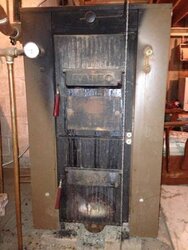We are new to burning wood. We've been running our wood boiler for only a couple of days and already have a thick film of sticky creosote on the inside of the fire box and it is now dripping down the outside of the chimney. I know this is due to a cold fire, but I'm unsure how to keep the fire burning hot. The blower only runs when the thermostat tells the system to kick on and, once the house warms up in the morning, it will not run at all the rest of the day. Because of this, the fire is barely smouldering most of the time, even with the dampers wide open. I'm not sure what to do here.
Also, I tried to get a good roaring fire going this morning to try and burn it off, but as the fire got bigger, the creosote began to catch fire, and I smothered the fire for fear of it spreading up the chimney.
Help??
Also, I tried to get a good roaring fire going this morning to try and burn it off, but as the fire got bigger, the creosote began to catch fire, and I smothered the fire for fear of it spreading up the chimney.
Help??


